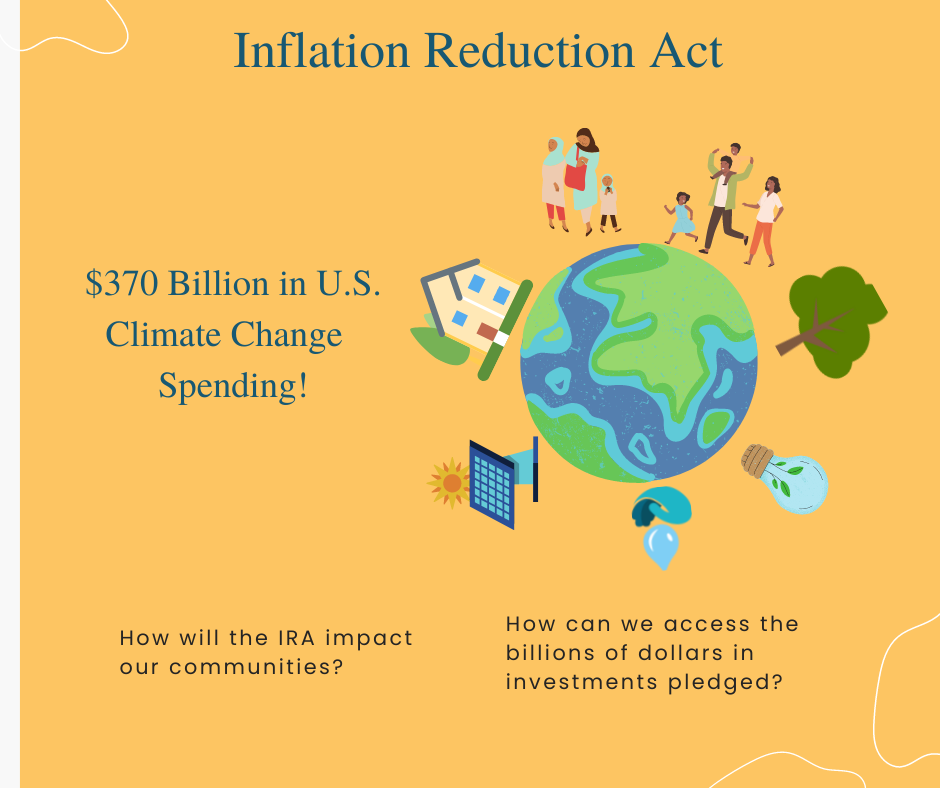
The Inflation Reduction Act could result in funding for community based organizations to make housing and neighborhoods healthier, more sustainable and economically viable.
IRA also help put us within reach of our nation’s climate commitment to cut carbon pollution by 50% by 2030 to prevent further global warming – and climate conditions that could many of us at risk.
At ILE we share the concern that many climate change activists have expressed about allocations in the bill to further fossil fuel production. However, if we take advantage of the investments we have been offered, we can work to offset the negatives. We can protect our communities and get the resources we need to adapt to the climate change already upon us while also doing our part to mitigate GHG and reduce further harm. – Harm that is disproportionately felt by low-income communities and communities of color, aptly known as “frontline communities”.
So how can you access IRA funds?
At ILE Strategies have some experience in the climate change and community-development funding landscape. Our work as included securing and managing federal funds as well as working on community-university partnerships on climate change and environmental justice.
Drawing from our experience here are some tips:
- Review your current programs and planned projects and look for ways to integrate climate mitigation and adaptation, contact the corresponding local, state and federal agency for opportunities for funding. The Justice40 initiative seeks to improve allocation of federal funds by prioritizing zip codes with predominantly low-income populations.
The White House Council on Environmental Equality has convened several meetings and has assembled a network of grassroots environmental justice experts as well as scientists and foundations to help guide community based organizations through the federal contracting process.
2. Partner with local environmental justice, ESG finance experts, climate change researchers including academic partners to build capacity and amplify your efforts collectively.
3. Submit a well-designed, evidence-based proposal to appropriate government agencies.
4. Publicize and promote your efforts to keep your community informed and to attract more stakeholders and support. The more of us working together and aligning our efforts, the greater our chances in successfully reducing GHGs and making our communities and planet safer for many generations into the future.
ILE Strategies Background in Climate Resiliency, Sustainable Economic Development:
Our co-founder, Anasa, spent 20 years securing public and private funding for sustainable community development and has served 15 years in academia teaching and leading campus-community based partnerships on climate and economic resiliency projects. She is a featured lecturer on the internationally renowned Healthy Affordable Housing course online developed by the Healthy Materials Lab (HML) at New School University/ Parsons School of Design Strategies. In addition to supporting fund development, Anasa has also facilitated sustainable building management training and conferences with WeACT for Environmental Justice, NYC Department of Environmental Protection, SolarOne and a host of other partners.
Contact ILE Strategies to explore opportunities to support your resource development efforts in building climate resilient communities. #